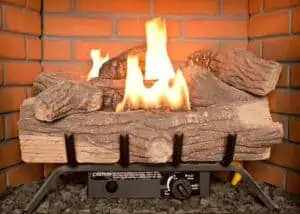How to Convert Gas Fireplace to Wood?
Many homeowners enjoy the calming, homey vibe that a wood-burning fireplace can provide. However, it can become expensive to keep up with the constant need for wood and the hassle of removing ash from the chimney. If you’re looking for a way to save money while still enjoying the cozy ambiance of a traditional wood-burning fireplace, you might want to consider converting it to gas.
(Looking for “gas fireplace installation near me“? Contact us Today!)

Unlike wood-burning units, gas fireplaces don’t require a chimney to burn, which means they don’t have to be cleaned and maintained as regularly as their traditional counterparts. Plus, gas fireplaces produce less carbon dioxide than wood-burning ones, which is good news for the environment.
Converting your gas fireplace to wood isn’t as complicated as you might think, but it’s important that you don’t try to tackle this project on your own without professional assistance. Not only will you need to know how to properly install the gas line and re-install the flue, but you’ll also need to get all of your existing attributes (including gas lines) assessed and inspected.
A professional can ensure that your conversion is safe and legal, and they’ll also have the expertise to help you determine whether or not your gas fireplace is eligible for a wood-burning conversion. This will help you avoid costly mistakes and unnecessary delays that can cost more than you’d save in the long run.
The price of a gas fireplace is one of the first things you should consider when comparing the costs of a conversion to a wood-burning unit. There are many factors that go into determining the final price, including the type of fireplace you’re looking for and its installation location.
For example, you’ll need to determine if your current gas fireplace has a direct vent or if it uses a chiminea type of flue that needs a chimney. If it’s a direct vent, the gas will come out of the chimney, while if it’s a chiminea, you’ll need to build or install a new flue system.
Once you’ve figured out the details, you can start shopping around for a reputable contractor who can do the job for you. Make sure you understand the process and ask plenty of questions before selecting a company.
How to Clean Up a Wood-Burning Fireplace
Once the fire is out, it’s important to make sure that you thoroughly clean your wood-burning fireplace. It’s easy to get creosote and other debris stuck inside the chimney, so it’s critical to have your fireplace inspected and cleaned regularly.
While you’re at it, be sure to remove all of the ash from your wood-burning fireplace and clean out any chimney or flue pipes. This will prevent the accumulation of creosote, which can cause a variety of problems for your health and safety.
It’s important to note that wood-burning fireplaces can pose a number of hazards, including the risk of carbon monoxide poisoning and smoke inhalation. This is why it’s important to have your fireplace inspected and cleaned by a professional before you convert it to wood.

